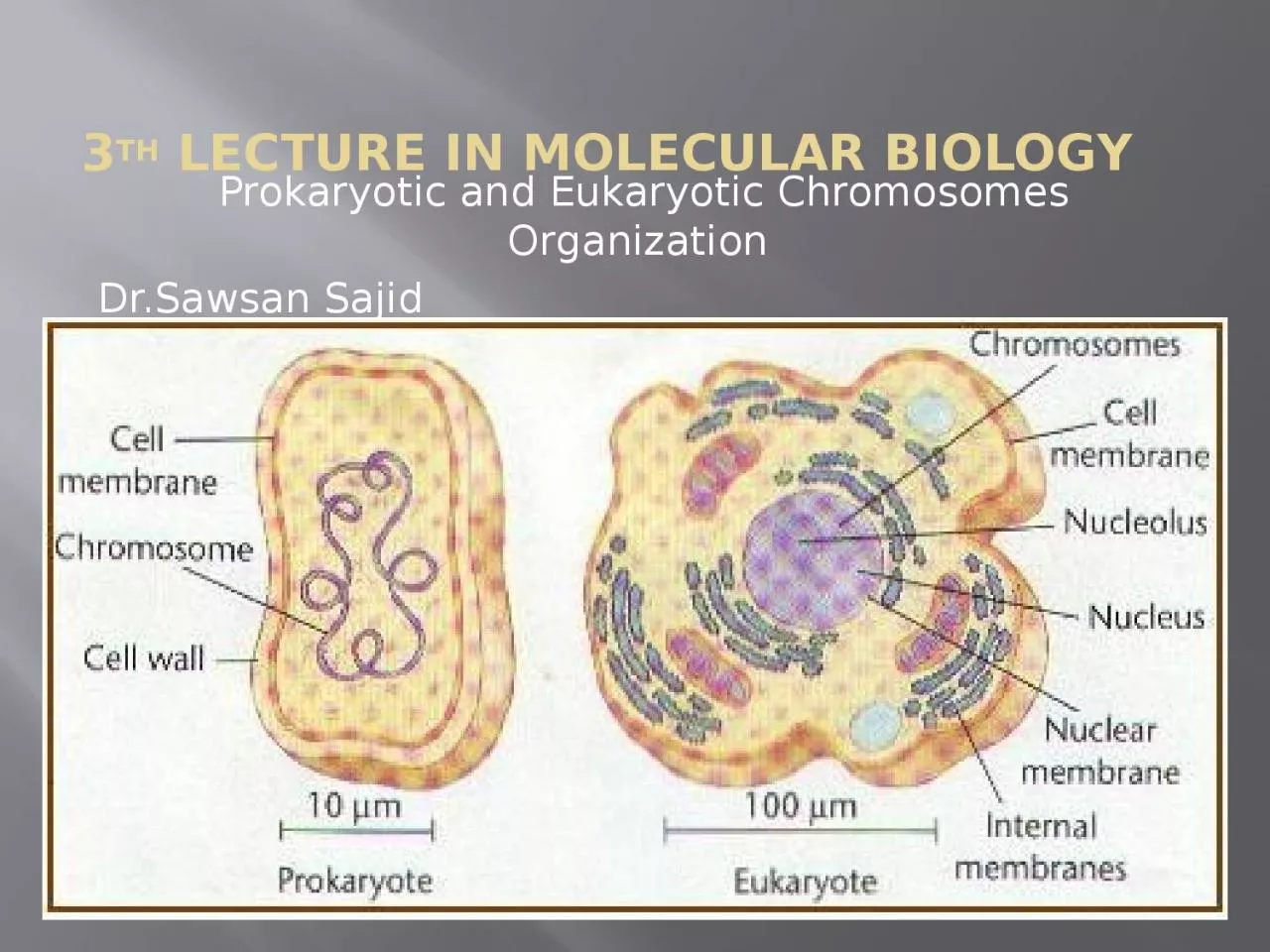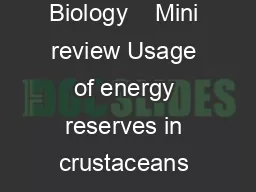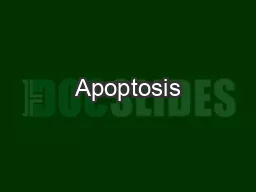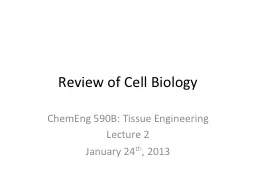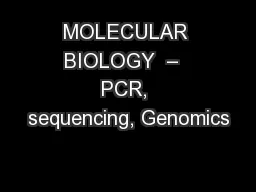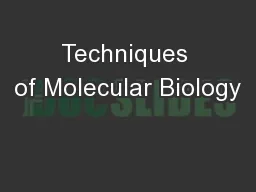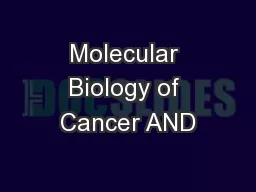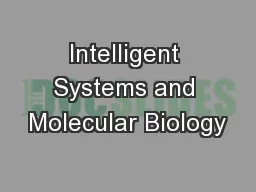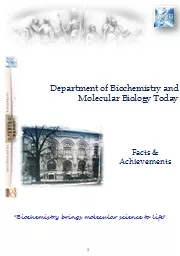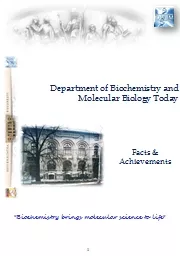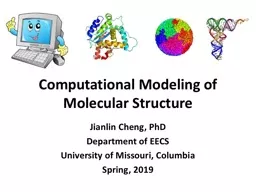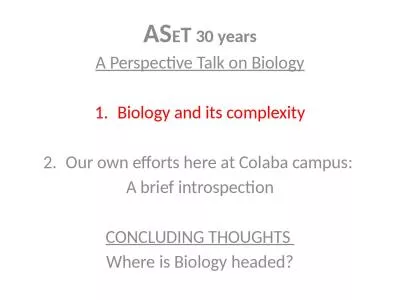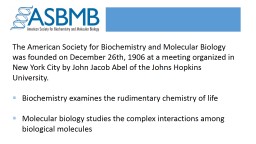PPT-3 th lecture in molecular biology
Author : melanie | Published Date : 2022-06-28
Prokaryotic and Eukaryotic Chromosomes Organization DrSawsan Sajid The term chromosome comes from the Greek words for color chroma and body soma Scientists
Presentation Embed Code
Download Presentation
Download Presentation The PPT/PDF document "3 th lecture in molecular biology" is the property of its rightful owner. Permission is granted to download and print the materials on this website for personal, non-commercial use only, and to display it on your personal computer provided you do not modify the materials and that you retain all copyright notices contained in the materials. By downloading content from our website, you accept the terms of this agreement.
3 th lecture in molecular biology: Transcript
Download Rules Of Document
"3 th lecture in molecular biology"The content belongs to its owner. You may download and print it for personal use, without modification, and keep all copyright notices. By downloading, you agree to these terms.
Related Documents

